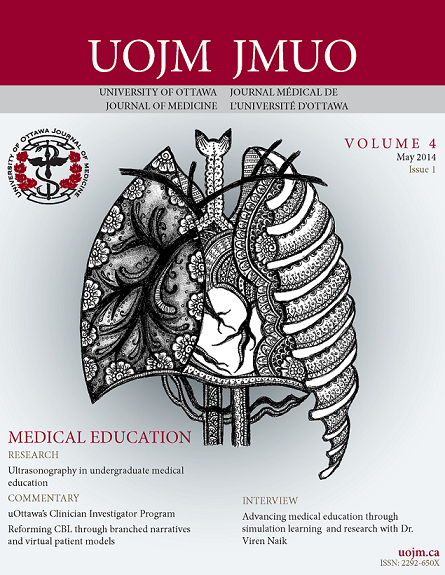Neglecting the null: the pitfalls of underreporting negative results in preclinical research
DOI :
https://doi.org/10.18192/uojm.v4i1.1036Mots-clés :
Publication bias, Underreporting, Negative results, Null results, Positive outcome reporting, Journalology, Pre¬clinical research, Reporting guidelines, Peer-review, Scientific misconductRésumé
ABSTRACT
Heightened competition for funding and increased pressure to publish in high-impact journals has led to a modern-day publication culture that favours positive results. The underreporting of negative, or null, results is a form of publication bias that occurs when researchers and/or reviewers fail to communicate findings due to unfavourable directionality or perceived unimportance. For nearly three decades, recognition of this bias in clinical research has led to revised policies and guidelines in an effort to improve reporting transparency and accuracy. Only recently has the existence of this reporting bias been fully appreciated as a formidable problem in preclinical research. Considering that preclinical research provides the foundation on which many clinical trials are conceived, finding solutions to increase the reporting accuracy of preclinical studies is of paramount importance. In this commentary, we will explore how the underreporting of negative results in preclinical research distorts scientific knowledge and subsequently misguides clinical research. We will conclude with several suggestions for reducing this bias with the intention of transitioning towards a truly transparent and objective publishing landscape.
Téléchargements
Publié-e
Numéro
Rubrique
Licence
- Les auteurs qui publient dans le JMUO gardent les droits d’auteur de leurs articles, incluant tous les brouillons et la copie finale publiée dans le journal
- Bien que le JMUO n’a pas les droits d’auteur des articles soumis, en acceptant de publier dans le JMUO, les auteurs donnent le droit au journal d’être les premiers à publier et à distribuer leurs articles.
- Par la suite, les auteurs peuvent soumettre leurs documents à d’autres publications, incluant des revues ou des livres, avec un remerciement de leur première publication dans le JMUO
- Des copies du JMUO seront distribuées à la fois sous format papier et en ligne, et tous les matériaux seront accessibles au public en ligne. Le journal n’a pas de responsabilité légale par rapport à la distribution publique du contenu.
- Prière de vous assurer que tous les auteurs, les coauteurs et les investigateurs
- Le contenu est rendu disponible sous licence Creative Commons Attribution - Pas d'Utilisation Commerciale - Pas de Modification 4.0 International.


